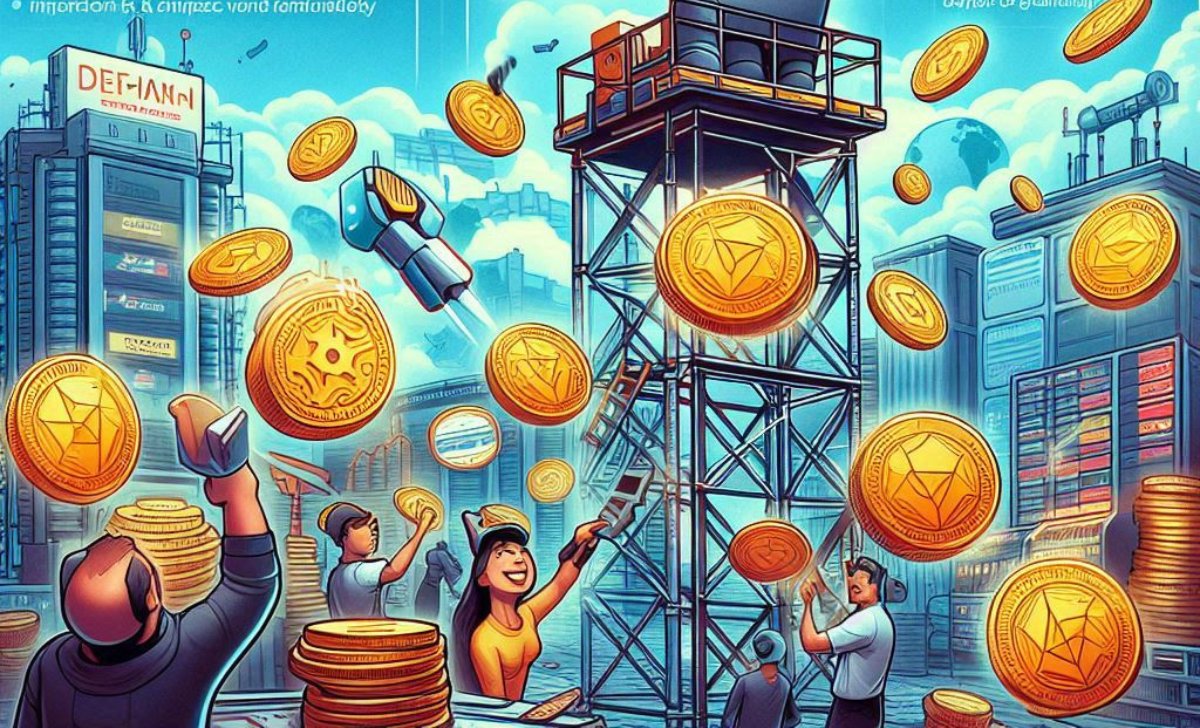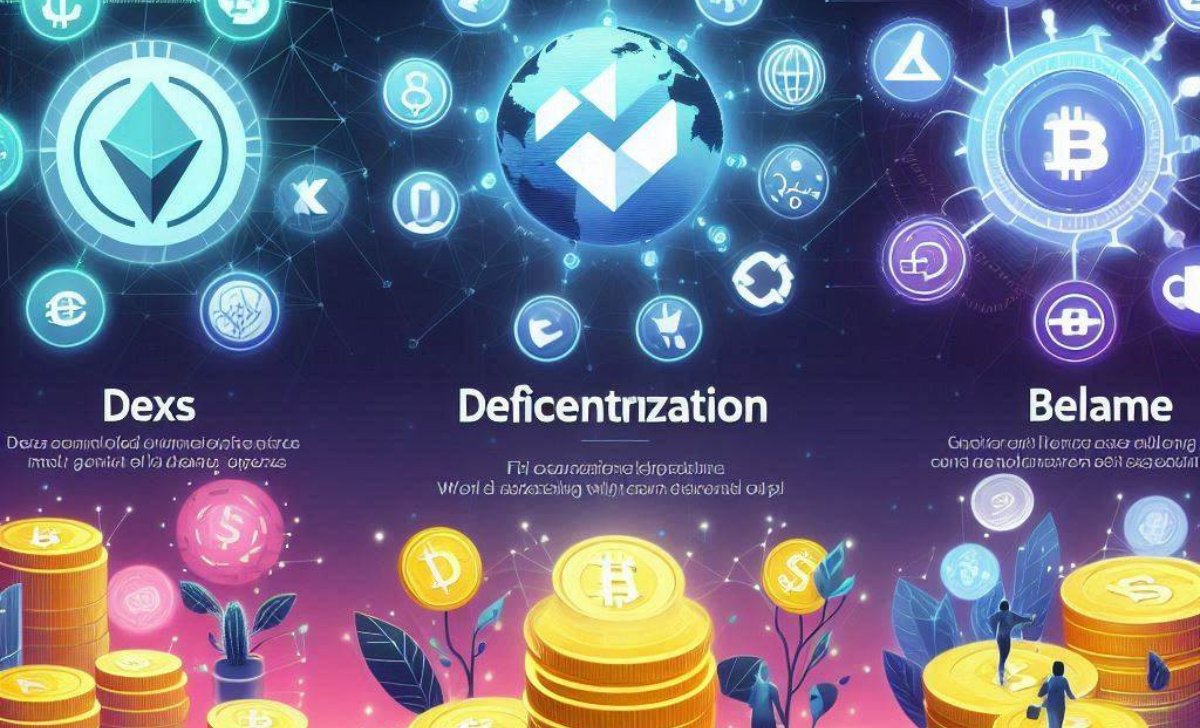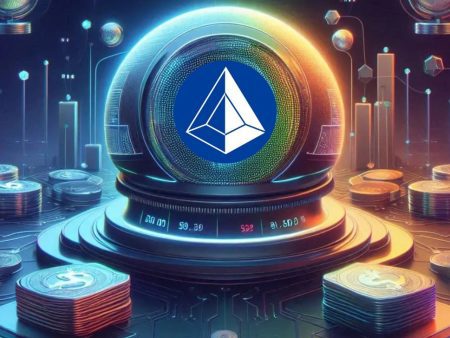DeFi Coins are reshaping the future of finance by enabling decentralized, trustless, and borderless transactions. It has become a top choice for investors in 2025 due to their strong market performance, innovative protocols, and growing institutional interest.
This comprehensive guide of TopCoin9 will walk you through everything you need to know about DeFi coins in 2025 — highlighting top-performing tokens, evaluating market caps, and offering practical investment insights backed by data and expert consensus.
What Are DeFi Coins and Why Do They Matter?

DeFi coins are cryptocurrencies that power decentralized financial applications — platforms that enable users to execute financial transactions like lending, borrowing, staking, and trading without intermediaries. Unlike traditional finance systems controlled by banks or governments, DeFi is governed by code, transparency, and user consensus.
The growing relevance of DeFi coins is evident in the surge of Total Value Locked (TVL) across DeFi protocols, which surpassed $92 billion as of Q1 2025, according to DeFiLlama (2025). This reflects strong user confidence and a shift towards trustless finance.
As reported by Harvard Business Review (2023), DeFi is creating an open financial ecosystem that enables greater access, especially in underbanked regions. Coins like Ethereum, Uniswap, and Aave are not just speculative assets — they’re building blocks of a new financial world.
With the foundational understanding of it in place, let’s explore the most promising defi coins list to watch in 2025. Let’s explore that in the next section!
Top 10 DeFi Coins to Watch in 2025

The DeFi sector continues to expand, but a few standout coins are leading the race. Below is a curated list of the best DeFi coins based on market capitalization, adoption, and innovative utility.
- Uniswap (UNI): As the dominant decentralized exchange (DEX), Uniswap processes billions in daily volume. Its V4 upgrade, set for mid-2025, promises improved gas efficiency and custom pools. UNI is a governance token with a market cap exceeding $8 billion(CoinGecko, 2025).
- Aave (AAVE): Aave leads the DeFi lending space, offering cross-chain liquidity solutions and strong institutional adoption (CoinDesk, 2024). It consistently ranks among the top five DeFi tokens in total value locked (TVL).
- Maker (MKR): MKR governs the DAI stablecoin, which maintains a peg without relying on centralized reserves (Investopedia, 2024). Its stability and resilience in volatile markets cement its importance in the DeFi ecosystem.
- Lido DAO (LDO): Lido dominates Ethereum staking with over 30% of staked ETH processed through its platform (StakingRewards.com, 2024). It allows users to earn yield without locking up their ETH, enhancing staking flexibility.
- Curve (CRV): Curve is optimized for low-slippage stablecoin swaps, playing a pivotal role in DeFi liquidity (Messari, 2024). Despite governance concerns, its trading volume and integration with major protocols keep CRV relevant.
- Synthetix (SNX): Synthetix enables the creation and trading of synthetic assets like stocks and commodities on-chain (Harvard Fintech Review, 2023). Its unique derivatives infrastructure positions it as a leader in decentralized finance innovation.
- GMX (GMX): GMX supports decentralized perpetual trading with leverage and low fees, appealing to advanced traders (DefiLlama, 2025). Its trustless model and growing volumes have sparked attention from DeFi analysts.
- dYdX (DYDX): dYdX rivals centralized exchanges in trading tools and recently migrated to a Cosmos-based blockchain in 2024 (CoinDesk, 2024). This shift enhances scalability and autonomy, strengthening its DeFi credentials.
- Pendle (PENDLE): Pendle tokenizes future yield streams, unlocking fixed-income strategies in DeFi (Bankless, 2024). Its growth reflects increasing interest in more sophisticated financial instruments on-chain.
- Balancer (BAL): Balancer offers programmable AMM pools that adapt to complex portfolio strategies (The Block Research, 2024). It’s widely integrated across DeFi platforms seeking flexible and efficient liquidity provision.
Now that we know the top DeFi coins in 2025, let’s uncover how to evaluate these tokens before investing your capital.
How to Evaluate DeFi Coins Before Investing

Not all DeFi coins are created equal. Here’s how savvy investors differentiate strong contenders from hype-driven projects.
- Market Capitalization & TVL: High market cap and TVL generally indicate network trust and adoption. According to CoinMarketCap, tokens with consistently growing TVL are more likely to withstand volatility (2025).
- Utility and Use Case: Tokens with real utility — like governance rights, staking rewards, or access to lending features — tend to perform better long-term. DeFi coins that support robust protocols attract sustained user interest.
- Team and Community: Strong developer backing and active communities often translate into resilience. Look for transparent roadmaps and GitHub activity.
- Audits and Security: Security is non-negotiable. Platforms like CertiK and Trail of Bits offer audit reports that are essential when reviewing smart contract risks.
Once you’ve evaluated a coin, the next step is deciding how to approach investing in the volatile DeFi market!
Investment Strategies for DeFi Coins in 2025
The DeFi space offers various investment models—each with different risk/reward ratios.
- HODLing Top-Tier DeFi Coins: Buying and holding trusted coins like UNI, AAVE, or MKR can be a lower-risk strategy. These tokens often rebound faster after market downturns.
- Yield Farming and Staking: Protocols like Curve or Lido offer yield-earning opportunities through staking or liquidity provision. However, yields can vary and depend on market conditions.
- Diversified Portfolios: Spreading your investment across lending, DEXs, and synthetic assets can reduce risk. According to Investopedia (2024), diversification remains a top tactic in crypto investing.
- Use Stop-Loss and Exit Plans: With DeFi being inherently volatile, setting price targets and stop-loss orders can help protect profits and limit downsides.
Whether you’re a long-term HODLer or actively seeking the best crypto to buy now, these strategies can help you navigate the dynamic DeFi landscape with more confidence.
Now that you know how to invest wisely, let’s explore where and how to actually buy and store your DeFi coins.
Best Platforms to Buy and Store DeFi Coins

Whether you prefer centralized ease or decentralized control, here are the best options for buying and securing DeFi coins.
- Centralized Exchanges (CEXs): Popular exchanges like Binance, Coinbase, XM and Kraken support most DeFi coins with fiat on-ramps. They offer high liquidity and user-friendly interfaces.
- Decentralized Exchanges (DEXs): For those who value privacy and control, Uniswap, 1inch, and Balancer allow you to swap tokens directly from your wallet.
- Secure Wallets: Non-custodial wallets like MetaMask, Trust Wallet, and Ledger are ideal for storing DeFi coins. According to the Ledger Blog (2024), hardware wallets significantly reduce the risk of phishing and malware attacks.
Conclusion
In 2025, DeFi coins represent both opportunity and challenge. The potential for high returns is matched by the need for strategic thinking, risk management, and staying informed. By focusing on top coins, diversifying portfolios, and using trusted platforms, you can maximize your exposure to the future of finance. Thank you for reading this article and don’t forget to follow us for more up-to-date insights on DeFi tokens, crypto trends, and smart investment strategies in 2025!

Emily Thompson is a highly skilled crypto writer and strategist with extensive experience in blockchain journalism, having contributed to Cointelegraph and Binance Academy. At TopCoin9, she ensures high-quality, SEO-optimized content that educates and informs the crypto community.
Email: [email protected]












